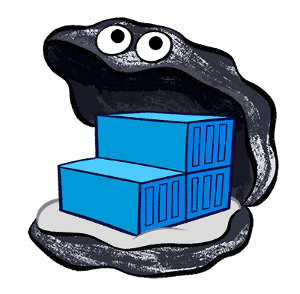Docker For Mac Reset Client
Posted By admin On 11.01.19[ad#Google Adsense 336×280] Cloud Station syncs and backs up users’ content seamlessly across their PCs, Macs, and DiskStation or RackStation. Synology Inc., the leader in next-generation Network Attached Storage (NAS) servers for the home and small to medium sized business markets, has release the Mac client for Cloud Station Beta enabling easy, yet secure Dropbox-like data synchronization for Mac users. When offline, computer users can still view and edit files, and the changes will be synchronized to other computers when Internet connection resumes. Synology cloud station mac high cpu.
I🔥I pptp vpn mac sierra VPN latest version| pptp vpn mac sierra the secure VPN ★★★(Best VPN🔥)★★★ # pptp vpn mac sierra Get a VPN?🔥Best VPN for Streaming ##pptp vpn mac sierra Router VPN download| pptp vpn mac sierra Android VPN download; how to pptp vpn mac sierra for. Unfortunately Apple has removed the PPTP client from Mac OS Sierra due to PPTP lacking the security features of other VPN protocols. As stated by Apple: If you’ve set up a PPTP VPN server, iOS 10 and macOS Sierra users won’t be able to connect to it. IOS 10 and macOS Sierra will remove PPTP connections from any VPN profile when a user upgrades their device. Pptp vpn mac high sierra. I haven’t yet installed the Sierra preview, but I doubt you’ll need a 3rd-party PPTP client, because PPTP is built-in to OS X 10.11, and probably Sierra, too. Here’s how to access it: Open System Preferences, and click Network. Under the list of network interfaces, click the + button. From the Interface pop-up menu, select VPN. Starting with macOS Sierra and iOS 10, Apple has withdrawn support for one of the methods of implementing a virtual private networks (VPN), the point-to-point tunneling protocol (PPTP). Even though the protocol is still available in earlier versions of its mobile and desktop software, Apple has dropped support for PPTP for security reasons.

I am completely new to Docker as of yesterday. I have this node.js server that I am running that simply creates a TCP server and then handles messages coming in from a client. There is a test harness that was written by someone else that I have been running that allows for as many concurrent connections as you want. When I run it locally, I can have 100+ concurrent connections no problem. I do however see a problem locally sometimes when I start to do 200+ concurrent connections, and it actually hits the socket.on(error) case and gives me an error.
The problem is that if you have your private registry set up such that it only allows clients to connect if they provide a valid client certificate, the current Docker for Mac setup has no way to provide a client certificate when attempting to connect to the registry server. We actually need this as well, and would love to pull the client cert & key out of the keychain. Curl on the Mac actually implements this. It might be possible to use the login subcommand to specify which client cert to use for a specific host.
If I start the server right up though, and try 200 concurrent connections, it usually successfully completes, but subsequent tries will error out. However when I run the harness with the server running in Docker, as soon as I try to run it with 33 concurrent connections, it does not work. I get a 'connection reset by peer' error from the test harness. If I try 32 connections, it works fine. When I try 33+, I also do not see any error on the server, as I did when running locally.
Docker For Mac Reset Client Access
If I try doing 32 concurrent connections again after it fails with 33+, it will succeed just fine. Does anyone know why this could be happening? Is there some sort of setting within Docker I have to change to allow more than 32 concurrent connections? I find it interesting that it's a hard limit of 32 and always works with 32 and never works with 33. FWIW, in my node.js server, I have it listening on port 8080 and host 0.0.0.0. Initially I had it on 127.0.0.1 but while that worked locally, it would not work in Docker. To run it, I'm using the command docker run -p 8080:8080 app.